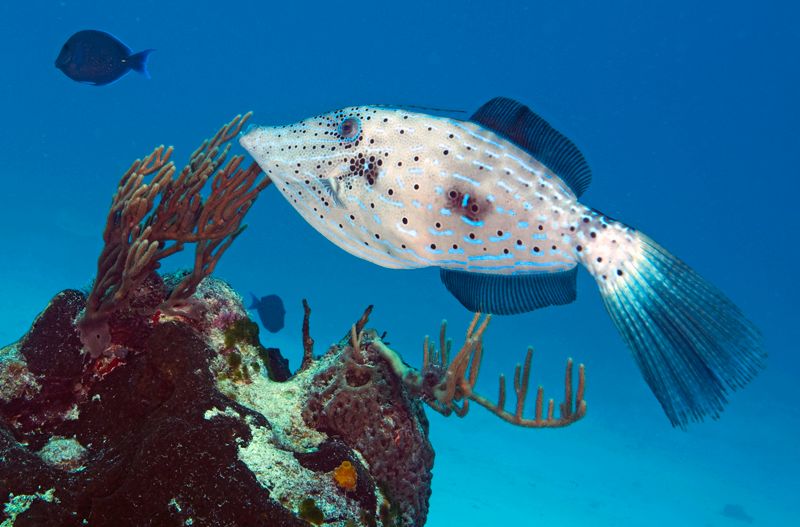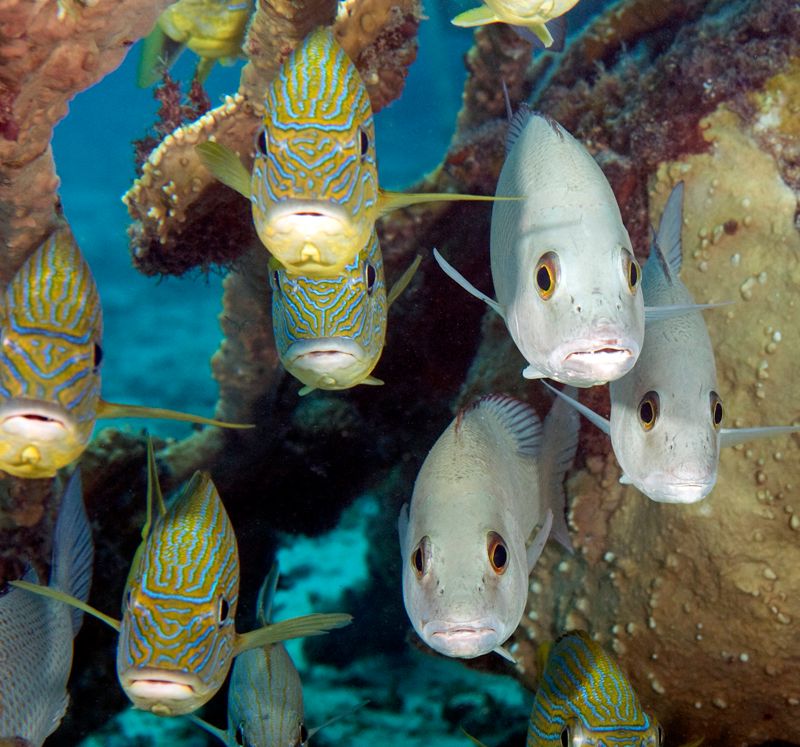ScubaJill
Contributor
I'll be using a 16-50mm lens and possibly a fish eye lens. Small strobe. Varying depths, varying current speed. Cozumel diving.
Welcome to ScubaBoard, the world's largest scuba diving community. Registration is not required to read the forums, but we encourage you to join. Joining has its benefits and enables you to participate in the discussions.
Benefits of registering include


I think the answer is to wear extra lead, so when you want to stop and be stable, dump a bunch of air and kneel on a safe spot. ... Also of critical importance is looking for places where you can hide behind a big piece of coral or rock and sheild yourself from the current. Fish will often congregate in these calmer or eddy areas.
I've only dived in a strong current once since that trip and left my camera off until we were out of the current.
Best I've found is use the currents. The nooks that shelter us shelter fish as well. Also shoot close while watching far ahead... imagine photography from a moving vehicle, keep your eyes on the road.
Having taken many photos in Cozumel, I always face downcurrent, stay closer to the bottom avoiding corals, sponges and especially hydroids. I look for things to hide behind. ... I do alot of helicoptering at a spot I have seen coming up so I am facing upstream. I am almost always looking ahead. I will turn and drop down then turn back and continue.
With current and fins downstream you can bounce up and down and then have to use your fins as rudders. Be careful of hydroids around your legs. I always try to judge how much space I have for my entire body with fins. I dive in surf shorts and before I got better at leg position and finning while shooting (frog kicks are best usually), I would get hydroid stings on my lower legs.
Learn to judge the current. It's not always the same over the same dive. Watch the particles in the water, hydroids, which way the fish face and move.
Good buoyancy is important and stay lower to the bottom.
Be prepared to quickly clip the camera back in if you get suddenly down currents or even much faster currents. I am assuming you use a lanyard.
With the techniques I use you can easily be separated from the group especially with non-photographers. You must keep an eye on them. Non-photographers also don't like having to wait for you.
I try to judge our group of divers if I don't know them. If they are newer divers or never drift dived before, then I know the DM can't wait or spot for me. I take fewer photos and keep closer to the group.
For bottom dwelling subjects, I have learned to shoot one handed so with my left I can find small crevices to put one or two fingers in to hold on in stronger current. Be careful that it's a "dead" crevice/hole. I frequently find that many of the small crevices/holes have sharp points. Larger crevices/holes may have something in it. Spotting these finger holds is as much of a skill as spotting your subject. Once I spot something I will helicopter if necessary so I am facing upstream.
On mid-reefs like La Francesa, Paso de Cedral and those like them I will criss cross the reef in the channels. Then look at the sides near the sand then start criss crossing again. There will be less current and keep you off the sides and top where current is stronger. I can also do this on some walls especially Santa Rosa. The criss cross will slow you down so the group may separate. I really like these reefs for photography as I know how to linger better on them. You may have to alter your criss cross path as many divers do the straight line drift and your paths intersect.
On walls, there is generally large coral to duck in behind. Most fish and other critters like the downstream protected side but others like eels like the current. Sites like Punta Sur, Colombia, Palancars, Santa Rosa, and Cedral wall generally have many opportunities to hide behind large coral. Those walls on the north end of the island have less cover and higher current so they can be more challenging.
On sand there is usually one side of a dune that has less current.
Reefs like Punta Tunich and Tormentos opposed to those I mentioned above and those on the north of the island can have less cover and higher current so many times it just becomes a superman dive. With high current I may just clip the camera back in and enjoy the ride.
Swim throughs are cool but I generally find very little to photograph in them.
Make sure to frequently look up from the bottom and the reef. Eagle rays, turtles, sharks and other patrolling fish don't announce themselves.
All the things I do in current photography is active not passive, uses more energy and more air. My camera is slightly negative and I carry very little air in the wing bladder. In higher current I may dump a bit of air to get down for a photo but this can waste air if I have to do it often.
Make sure to tell the DM how you will be diving i.e. criss cross, straight, frequently hiding behind something and how long you generally may take on a subject. If I find something very interesting, I may take 20 photographs which puts me behind the group.
Make sure to ask the DM about the currents on particular dive. You may want to find a dive op that offers divers choice of sites and not a set schedule. That way you can know what to expect and maybe lower current. It will depend on who is on the boat at the time. You can also go to less populated sites. For example, people who don't go to Cozumel much/never just absolutely have to do the Palancar dives and while these can be great dives, I can be content with two shallow dives or a different wall. You may be locked into dives that others just have to do especially with large dive ops and their large boats.
This is how I do it and it took many dives to get comfortable with photography on a drift dive. I find it easier in Cozumel than in places like Fiji and French Polynesia where surge is an additional factor. Sorry if I wrote book but hope it helps.
